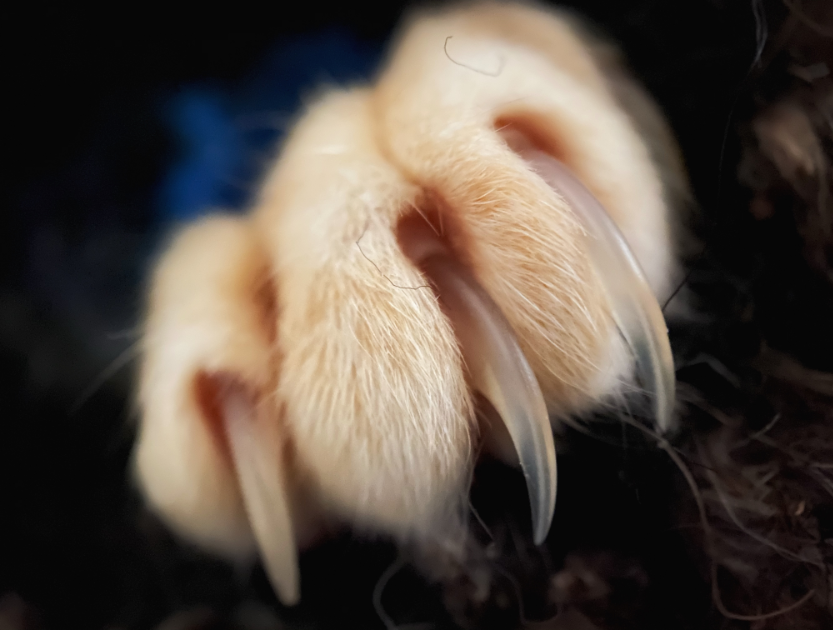Scientists have finally discovered the gene mutation that makes most orange cats male
For decades, the gene that results in only 1 in 5 ginger kitties being female has eluded researchers.

We know 80% of orange cats are male, but until now we didn't know the specific gene mutation that causes orange fur.
If an orange cat were to show up at your doorstep and you had to wager whether it was male or female, the odds would definitely be in your favor if you bet male. Only around 20% of orange cats are female, making them fairly rare (though not as rare as a male calico cat, as 99.9% of calicos are female).
Up until now, scientists assumed that the male-to-female ratio for orange cats was due to an X chromosome gene mutation. Since male cats have XY chromosomes, having the gene mutation on the X chromosome makes a male cat orange. But since female cats have two X chromosomes, they have to inherit the mutation on both of them, making it statistically less likely for a female cat to come out with orange fur. While the fact that a sex-linked gene causes orange coloring in cats was understood, which specific gene and what kind of mutation have been an elusive mysteries for decades.

Not anymore. In two studies published simultaneously in the journal Current Biology in May 2025, geneticists at Stanford University in the U.S. and Kyushu University in Japan have pinpointed the exact gene mutation that causes orange pigmentation in cats. The gene is known as Arghap36, and the mutation appears to delete a section of DNA that normally suppresses the expression of the gene, allowing it to remain active.
But the finding was surprising in a few ways.
“At the time we found it, the Arhgap36 gene had no connection to pigmentation,” said Stanford geneticist and lead author Christopher Kaelin, PhD. in a statement. Arhgap36, which has been studied in cancer and developmental biology research, is normally expressed in neuroendocrine tissues. Overexpression there can lead to tumors, but the increased activity of the gene in orange cats causes their unique pigmentation.

“In a number of species that have yellow or orange pigment, those mutations almost exclusively occur in one of two genes, and neither of those genes are sex-linked,” Kaelin said. “The mutation in orange cats seems to turn on Arghap36 expression in a cell type, the pigment cell, where it’s not normally expressed.”
Notably, this seems to truly be specific to orange cats and only orange cats.
“Arghap36 is not expressed in mouse pigment cells, in human pigment cells or in cat pigment cells from non-orange cats,” Kaelin said. “The mutation in orange cats seems to turn on Arghap36 expression in a cell type, the pigment cell, where it’s not normally expressed. Certainly, this is a very unusual mechanism where you get misexpression of a gene in a specific cell type."

The development of genomic research over the past five to ten years is what enabled the scientists to pinpoint the way the gene mutation works. Hiroyuki Sasaki, a self-proclaimed cat-lover and geneticist at Kyushu University’s Medical Institute of Bioregulation and the Institute for Advanced Study, organized a crowdfunded effort in Japan, raising $70,000 so he could fund his study.
“Identifying the gene has been a longtime dream, so it’s a joy to have finally cracked it,” Sasaki said in a statement. "Arghap36 is essential for development, with many other roles in the body, so I had never imagined it could be the orange gene."
Sasaki points out that the DNA deletion lies in a non-coding deletion region of the gene, so the protein itself doesn't change. Arghap36 is also active in many areas of the body, including the brain and hormonal glands, which means the activation of it could theoretically affect more than just fur color in orange cats.
“For example, many cat owners swear by the idea that different coat colors and patterns are linked with different personalities,” laughs Sasaki. “There’s no scientific evidence for this yet, but it’s an intriguing idea and one I’d love to explore further.”
One thing the scientists don't know for sure is when along the line of evolution this mutation first occurred. Kaelin says it probably occurred early in the domestication process, but Sasaki has ideas for figuring it out.
“One idea is to study ancient Egyptian cat paintings—or even to test DNA from mummified cats—to see if any cats back then were orange,” he says. “It’s ambitious, but I’m excited to try.”
You can read more about the study from Stanford University here and the Kyushu University study here.




 Beaver on riverbank.
Beaver on riverbank.  Pbs Nature Swimming GIF by Nature on PBS
Pbs Nature Swimming GIF by Nature on PBS  An actual beaver dam on the now-thriving Price River
An actual beaver dam on the now-thriving Price River 
 Who doesn't love Pluto?
Who doesn't love Pluto?  Pluto agrees.
Pluto agrees. 
 a piece of paper with a heart drawn on it Photo by
a piece of paper with a heart drawn on it Photo by 
 "Bought an espresso machine, took some time to learn how to dial it in and pull a proper shot."
"Bought an espresso machine, took some time to learn how to dial it in and pull a proper shot." "Frozen meals are just as unhealthy, but much cheaper."
"Frozen meals are just as unhealthy, but much cheaper." "I’ve embraced the gray!"
"I’ve embraced the gray!"  "Bidet toilet seat is cheap, easy to install, much easier and faster to use."
"Bidet toilet seat is cheap, easy to install, much easier and faster to use."
 American portion sizes are colossal.Canva Photos
American portion sizes are colossal.Canva Photos American public restrooms aren't very private.Canva Photos
American public restrooms aren't very private.Canva Photos Cashiers in America stand all shift long.Canva Photos
Cashiers in America stand all shift long.Canva Photos America loves the Pledge of Allegiance.Canva Photos.
America loves the Pledge of Allegiance.Canva Photos. Cosmetic surgeries on pets are...a choice.Canva Photos.
Cosmetic surgeries on pets are...a choice.Canva Photos. America loves extra sugar in savory foods.Canva Photos.
America loves extra sugar in savory foods.Canva Photos.